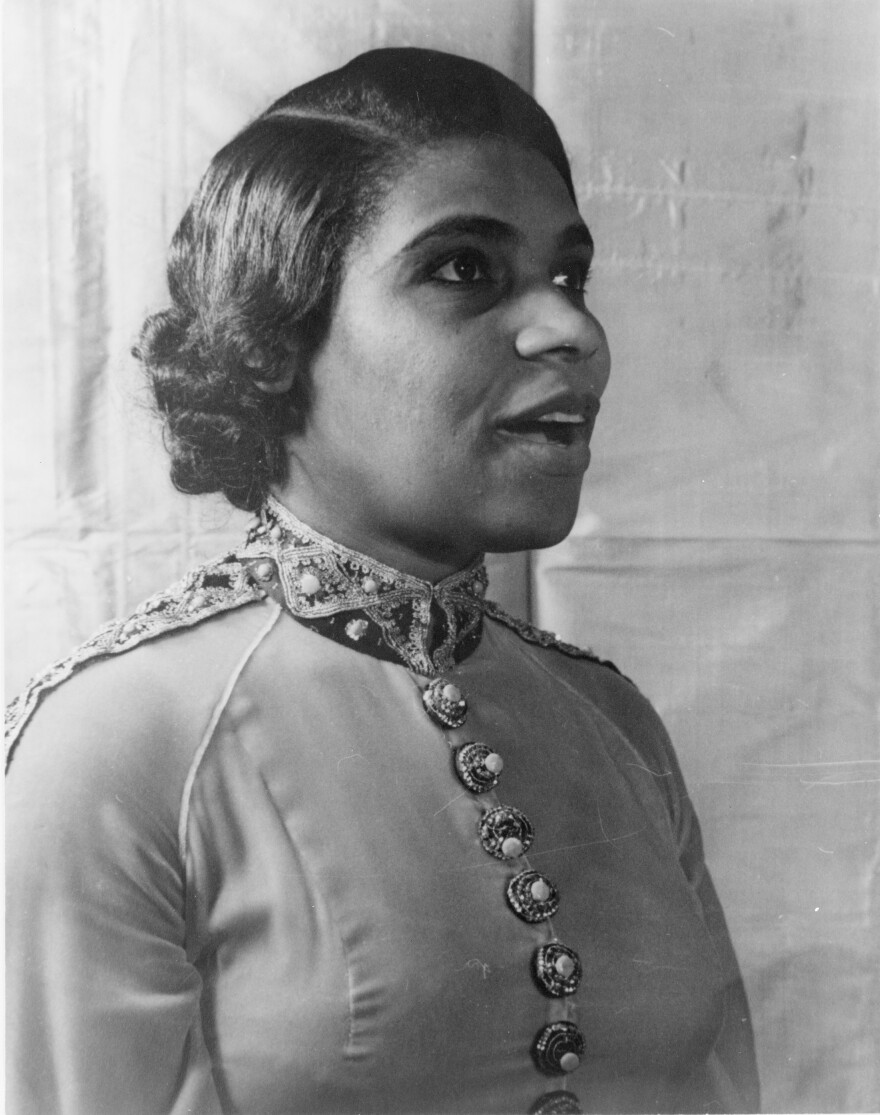Depending on your age, the name Marian Anderson can belong to the realm of indelible and haunting experience, or mysterious legend.
Born in 1897, hers was "a voice that can be heard only once in a hundred years," to borrow from acclaimed Italian conductor Arturo Toscanini. It has long ago passed that impressive landmark in time. To many people today, the reasons and causes of Anderson’s phenomenal rise and extraordinary triumphs can be at best, confusing. To really understand them we must return to another world, another America, a world all but incomprehensible to anyone coming of age under the era of an African-American President.
Anderson’s world was one on the verge of war, in which everyone was forced to take sides and play a part, and in which Marian Anderson would become one of history's principal characters. She helped to bring a nation together with her voice.
The backdrop to this unlikely rise:
This was a time known by historians as "the Nadir," the lowest point in the fortunes of Black Americans in the modern era; after the failure of Reconstruction, after the hopes of the Civil War. In race relations, the world had not moved forward, but backward. Freedom was followed by peonage; the early electoral successes had been reversed. Violence against African Americans was commonplace and sanctioned, and daily humiliations were the order of the day.
Segregation of the races was the law, and it was into this landscape that the child of a woman who took in laundry and scrubbed floors to make ends meet would, against all odds, rise to befriend presidents and first ladies, kings and queens. In a Cinderella-like fairytale, she would, after being too poor to even attend high school -- and without financial assistance -- rise to the heights of the musical, political and social worlds.
By her maturity, and after gambling all her savings to finance a concert in Europe, Marian Anderson would begin a tour of the world singing in English, French, German, Italian, Swedish, Spanish and Norwegian. She traveled to all the capitals and major cities of the known world, from Los Angeles to Berlin, Moscow, Stockholm and Tokyo (where her appearance marked the first time a person of color sang at the court of the Emperor of Japan in over 2,000 years), Buenos Aires, Rangoon, New York, London, Paris, and many more. The tour proved to be not the end of a career, but the beginning of her life as an artist, philanthropist, and civil rights icon.
Marian Anderson is a study in perseverance and will to survive, and finally achieved greatness for all peoples, in all places, at all times. She would say of herself at the end of her life, returning home and proclaiming proudly, “I am an American.”
The complete story
For our broadcast we have gathered a number of voices, from scholars and historians, to writers and musicians, to tell her story and its effect that carries over into our time. Simon Estes, the first African-American male to sing at Bayreuth, confesses that looking back at her great example, "Many obstacles still remain for the black singer. Especially for one trying to sing the heroic and romantic male lead . There is still resistance."
Denyce Graves, mezzo- soprano, recalls, "I first heard of Marian Anderson in the fourth grade. I never dreamed that I would one day meet her and follow in her footsteps and enter the history books."
The biographer and scholar Allan Keiler of Brandeis University recounts that after hearing Anderson’s voice, he was inspired to give over a decade of research and writing to produce the book, “Marian Anderson, A Singers Journey.”
“What I never imagined,” Keiler confessed at the end of his study, "was the magnitude of her struggle. What it had taken for her to achieve what she did. It's incredible."
Finally, there’s Russell Freedman, who found he wanted to write about Marian Anderson in a way that even children could understand. "You have to understand what she did in the history of civil rights. She really helped begin that movement when she sang at the Lincoln Memorial." Freedman is the author of “The Voice That Challenged a Nation.”
We'll start at the ball
We'll take as our starting point a recent release from the archives of the Metropolitan Opera, Anderson's history-making performance in Giuseppe Verdi’s “The Masked Ball,” from 1955, in which she broke the color line at that house. We shall hear her over the span of her long career in opera, oratorio, lieder, and finally spirituals, which she raised to the level of the great art songs that she so loved.
Hear this program on KPAC 88.3 FM and KTXI 90.1 FM on Monday, February 25, 2013 at 8 p.m.


